Multiple exposures from Donald Trump's campaign trail
- Published

The presidential election in the US has of course produced a flood of images, many of them memorable.
From the confrontations between Hillary Clinton and Donald Trump during the televised debates to supporters of each candidate making their voices heard.
Yet a series of pictures by Canadian photographer Sarah Palmer offer a new approach to the story.
Palmer uses in-camera multiple exposures to combine scenes, creating slightly surreal juxtapositions, where one image bleeds into another, leaving the viewer to try and decipher the final frame.
The use of multiple exposures is something Palmer specialises in and she felt it suited the Trump campaign well.
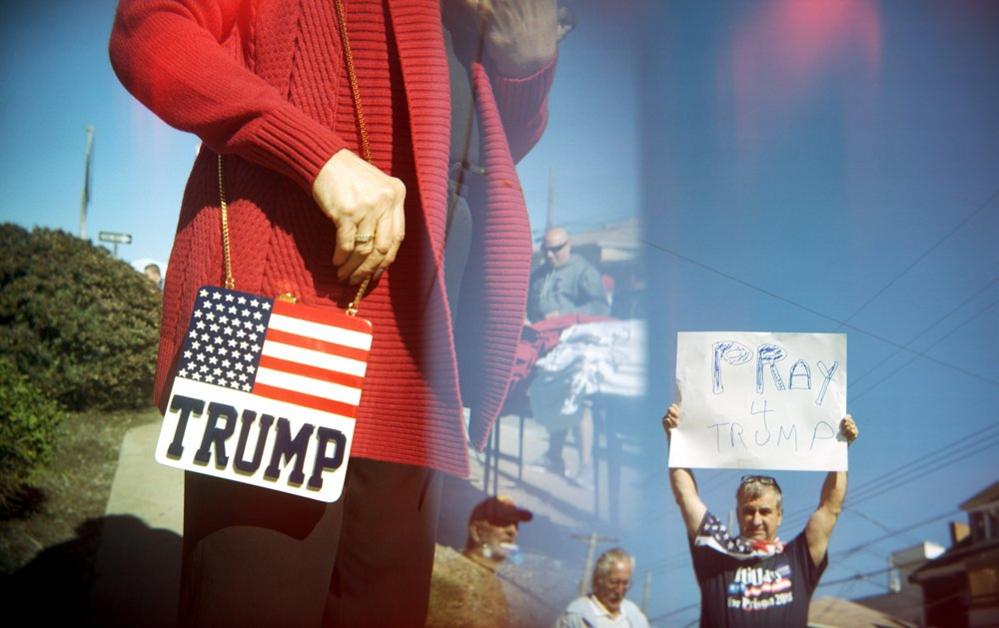

"I started this project because I was curious about the campaign and wanted to experience it for myself, which I think is how a lot of photo projects are born," says Palmer.
"I also wanted to document it in my own style which I think naturally works well, because it adds to the dreaminess and confusion of the entire Trump campaign."
As a viewer I find myself attempting to disentangle the frames and of course Palmer's voice is very much within them, because she has decided what to combine, although there is also that random element.
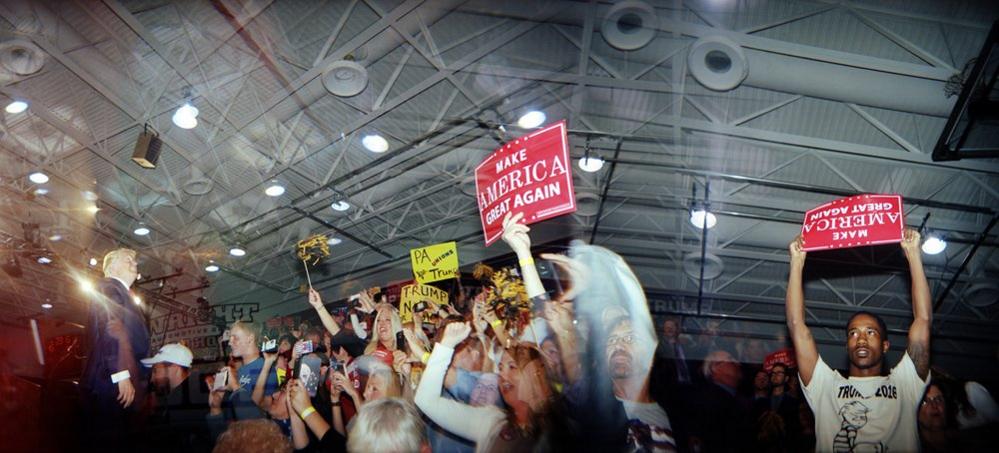
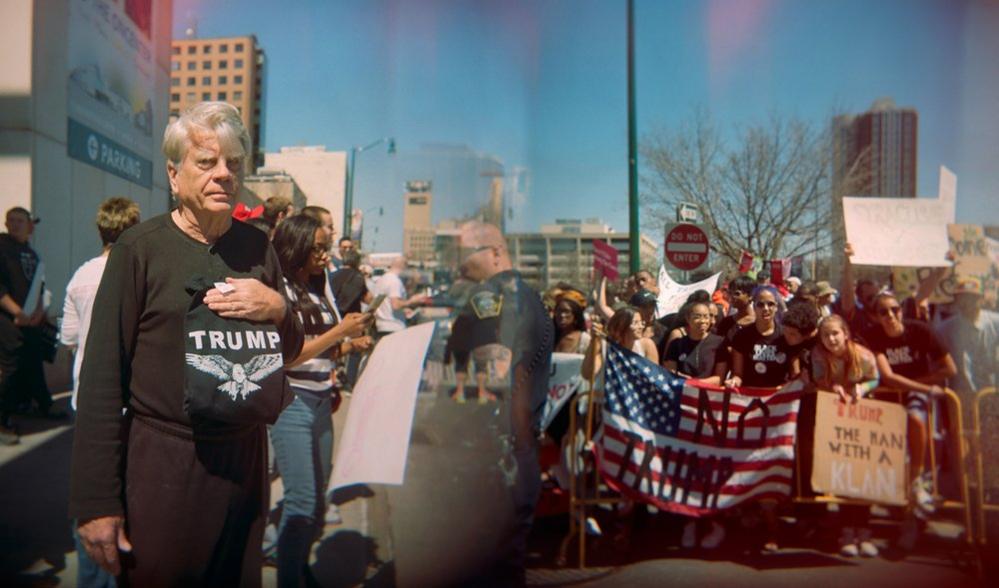
"I make my images with an idea in mind, but when I get others to look at them, they often see something completely different, which I really like," says Palmer.
"As much as I put myself into these images, I'm also trying to engage a narrative for the viewer to find themselves in there. I want them to feel the experiences and have them feel like they could be their own memories. I want people to feel what's going on, not just simply for a record of an event or time."
It is a style Palmer has used on a number of stories and it is very effective. She began using multiple exposures having taken a Holga camera on holiday, finding it allowed her to add a level of emotion to her pictures.
Palmer adds: "My memories are often stacked on top of each other, making it hard for me to separate them and that's how I had been wanting to shoot for a long time, but I just didn't know how."

Here Sarah Palmer speaks about a selection of her multiple exposure images from a number of stories.
Colombia, 2014
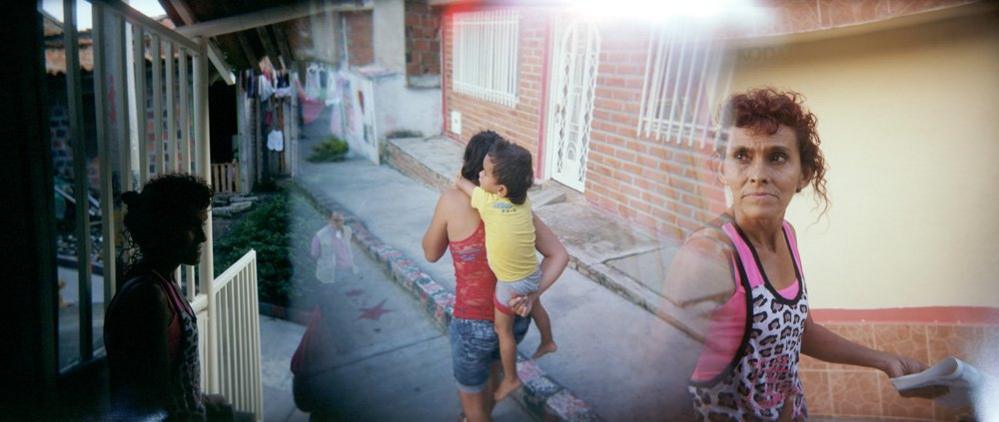
Pictured is Lucy, a displaced mother and her family in Colombia. She is taking documents to the head of the village so she can declare her older daughter (not pictured) newly displaced.
I wanted to show Lucy and her family together in a frame as I could feel her worry, so I wanted to convey that to the viewer and the best way to do that is to show the source of her worry, which is her family.

A coffee farmer washes cups after teaching visitors how they harvest coffee from a raw bean. I wanted to pair the romance of stirring the coffee beans on a hot stove with the ordinary task of washing the cups after drinking the coffee.
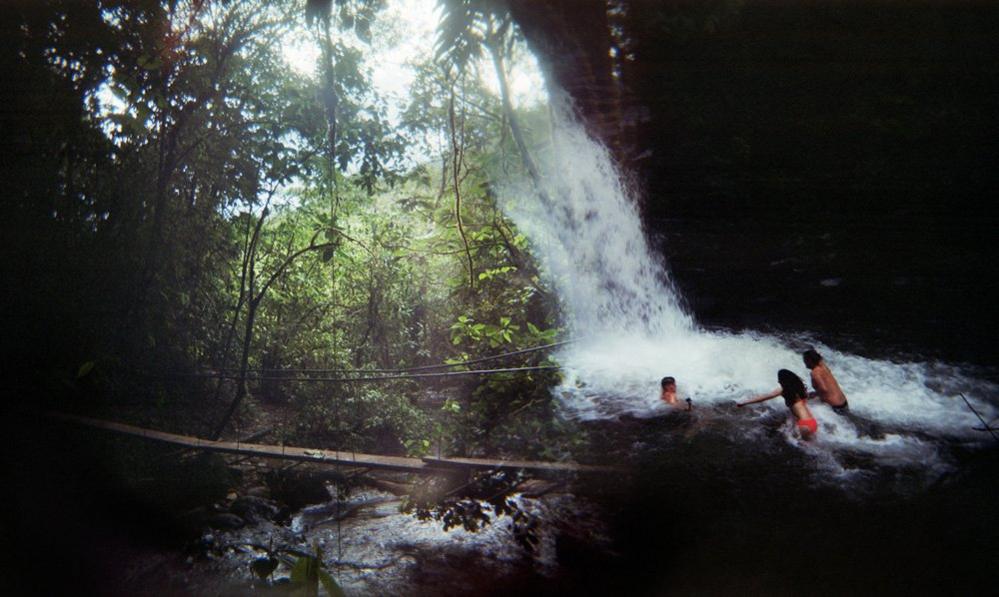
Halfway up a mountain, over some rickety bridges and slippery rocks, appeared an ice-cold waterfall and strangers jumping into it. I wanted to simply pair the journey of getting there with the end spot. It felt like a dream, so merging them together just felt right.

Niagara Falls, 2014
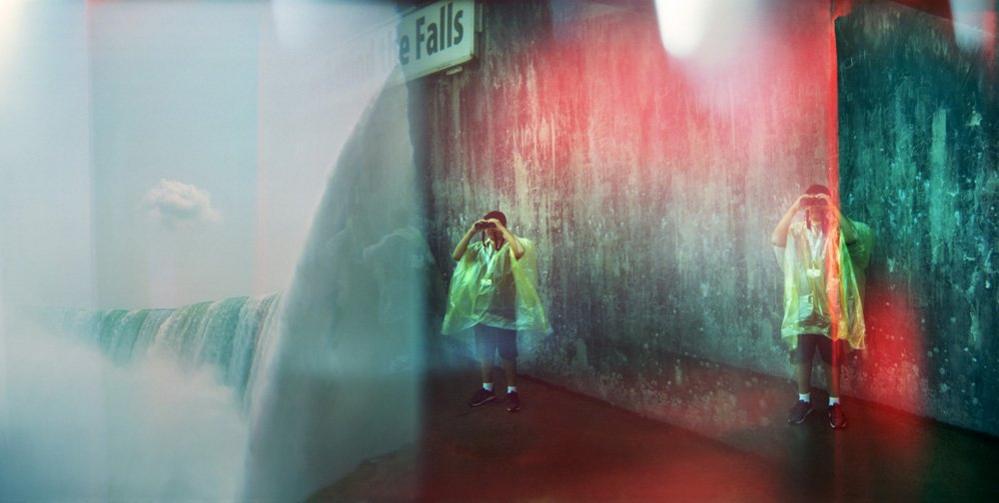
We put on rain ponchos and took an elevator down 150 feet into the earth, arriving in front of the massive falls. Everyone was soaked, staring at the water rushing down. This boy, however, was looking in the opposite direction, seemingly unaware of the sight before us.

Seoraksan Mountain, South Korea, 2011
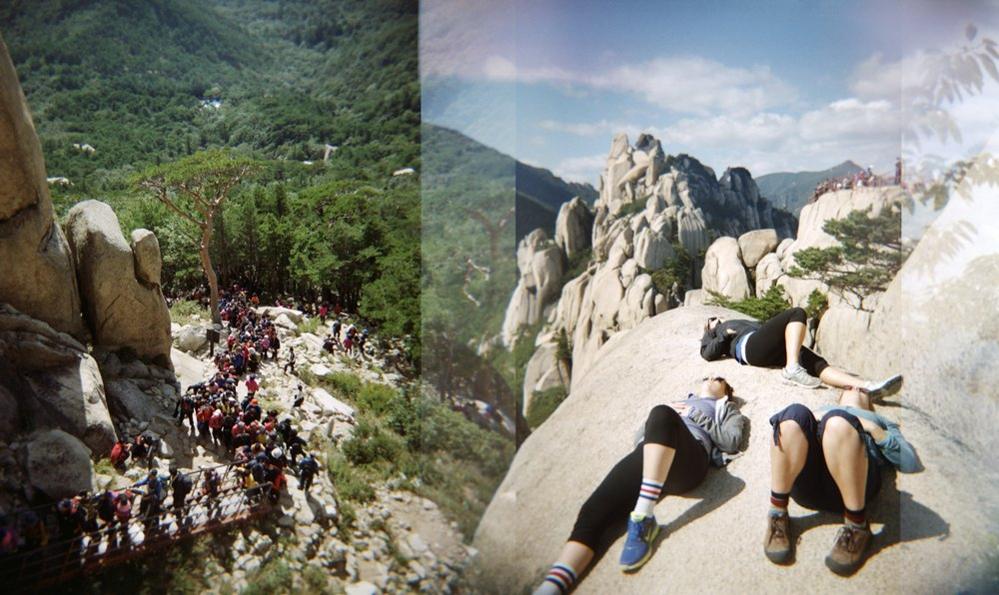
To the left of the frame is a line of hikers to ready to start ascending Seoraksan Mountain in South Korea. It was a holiday weekend and felt more like waiting in line at an amusement park than a leisurely hike in the wilderness. We had to scale rocks at the top to find refuge from the crowds before getting back in line to walk down.
Thailand, 2011
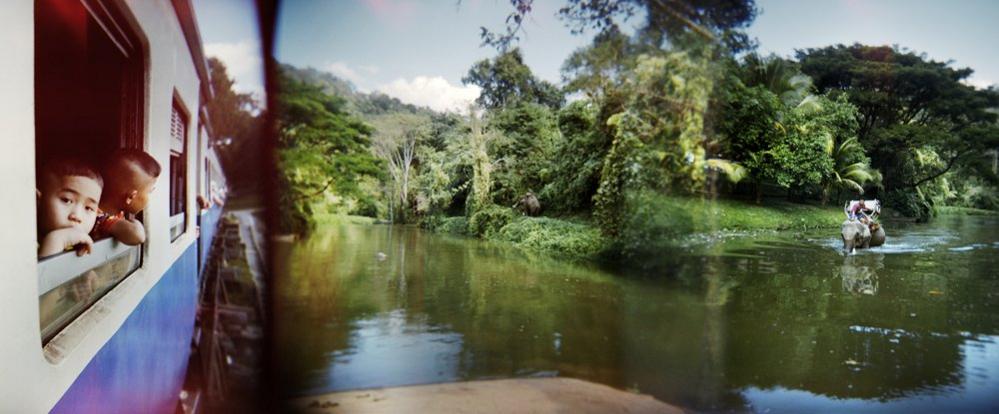
Boys hang their heads out of the window on The Death Railway in Kanchanaburi, Thailand, which was built by prisoners of war during World War Two. The right-hand image was taken at an elephant hospital in northern Thailand, where many elephants come for treatment after life-threatening injuries from stepping on landmines.